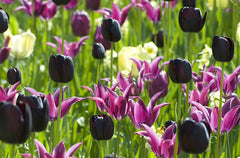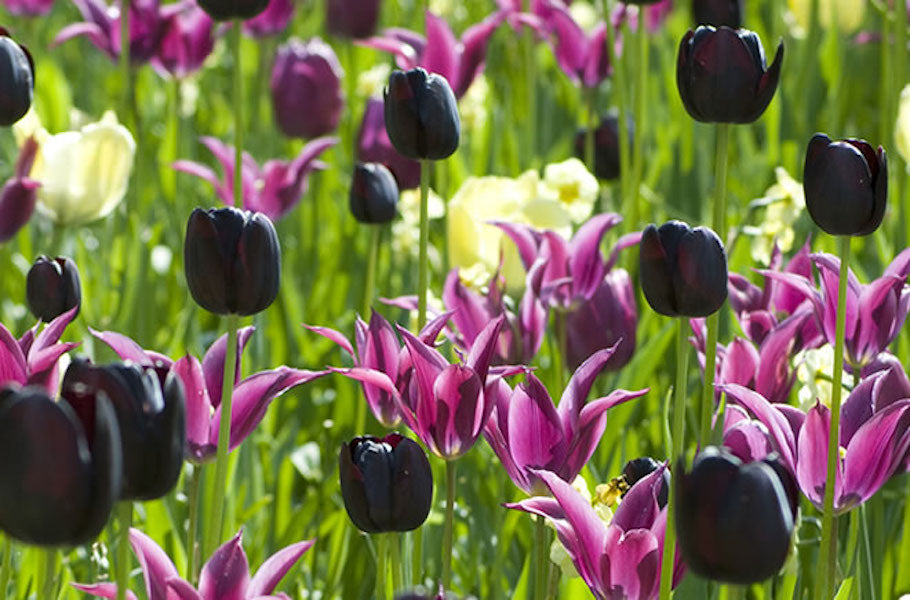
This week's #TulipFact: Growers have sought for centuries to breed a true Black Tulip. While some have been close, the search remains for this "Holy Grail" of the Tulip world.
The legend of the Black Tulip began in 1850, with the publishing of Alexandre Dumas' novel "La Tulipe Noire" (or, in English, 'The Black Tulip'). It is a powerful tale about love, jealousy, and obsession. However, it also includes in the story a magnificent prize, offered to the first man or woman to produce a pure, black Tulip.
While the book was of course a fiction, imaginations were gripped. Tulip Lovers and Breeders began to wonder - 'could we perhaps see a Black Tulip in the real world?' After all, Tulips were (and still are) known to show incredible variety and versatility. And so, the race was on.
Generations of Dutch Tulip growers would try their hand at creating the darkest Tulip imaginable, and it wouldn't be long before some began to claim success. In 1891, well-known grower name E. H. Krelage declared victory in creating the fictional flower, going so far as to name his new breed 'La Tulipe Noire' after the book. But, while none can doubt the marketing genius of tying his new breed to the story, those who saw it would note its color as being not black, but dark purple.
Still, it represented a first step on the quest for this Tulip Holy Grail. In the decades that followed, other valiant efforts would be made - C. Keur registered the frilled and exotic looking 'Black Parrot' in 1937, followed by JJ Grullemans' extremely popular 'Queen of Night' in 1944, and in 1955 'Black Beauty' by M. van Waveren.
All were undoubtedly dark. But they were also undoubtedly purple. And so the search continued, with many breeders enthralled. Among them was Geert Hageman, a grower and hybridizer from Oude Niedorp in Northern Holland. He had read Dumas' novel as a child, and found himself enthralled.
Seeing the earlier attempts as a starting point, he spent the 1970s developing a new cross-fertilization project, one that involved collecting seeds from many of the predecessors, eventually producing over a thousand specimens, which he coded and planted.
And for his next step? Patience. Tulips were not put on this Earth to offer immediate satisfaction - new seeds in particular require six to seven years of growth before they will produce a new flower. Geert would have to simply wait and hope during this time.
It would not be until February, 1986 that he would be able to see the results of his work. And he would be astounded. Amongst the foliage he spotted a small, shining, very dark Tulip bud. He would go on to cultivate this flower, breeding new bulbs creating a healthy strain, and eventually registering it as the 'Paul Scherer' in the year 2000.
But is it a true Black Tulip? Both yes and no. These Tulips are darker than any that came before, and are widely considered to be the darkest breed of Tulips today. However, the breed still maintains a faint purple hue, and so is not, still, truly black.
Today, the search continues. According to the Dutch Royal General Bulb Growers' Association (KAVB), which registers new Tulips, eleven new "Black Tulip" breeds have been registered since 2000, with the latest being the frilly edged Tulipa 'Fringed Black', registered in 2012.
For those of us that wish to see the legend become reality, we will have to wait a bit longer. But thanks to the continued efforts of dedicated growers, this striking and beautiful flower may, one day, be real enough to hold in our hand.

